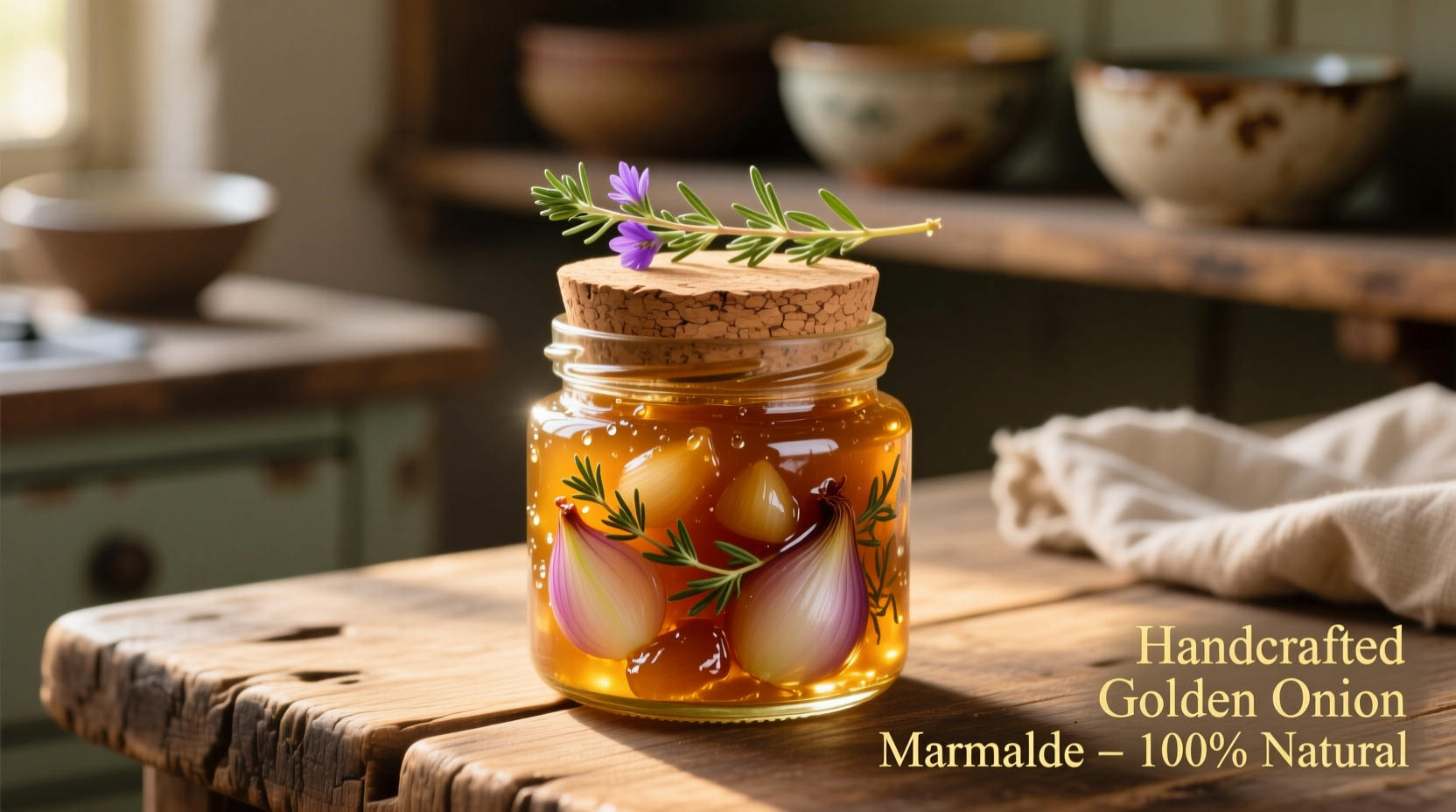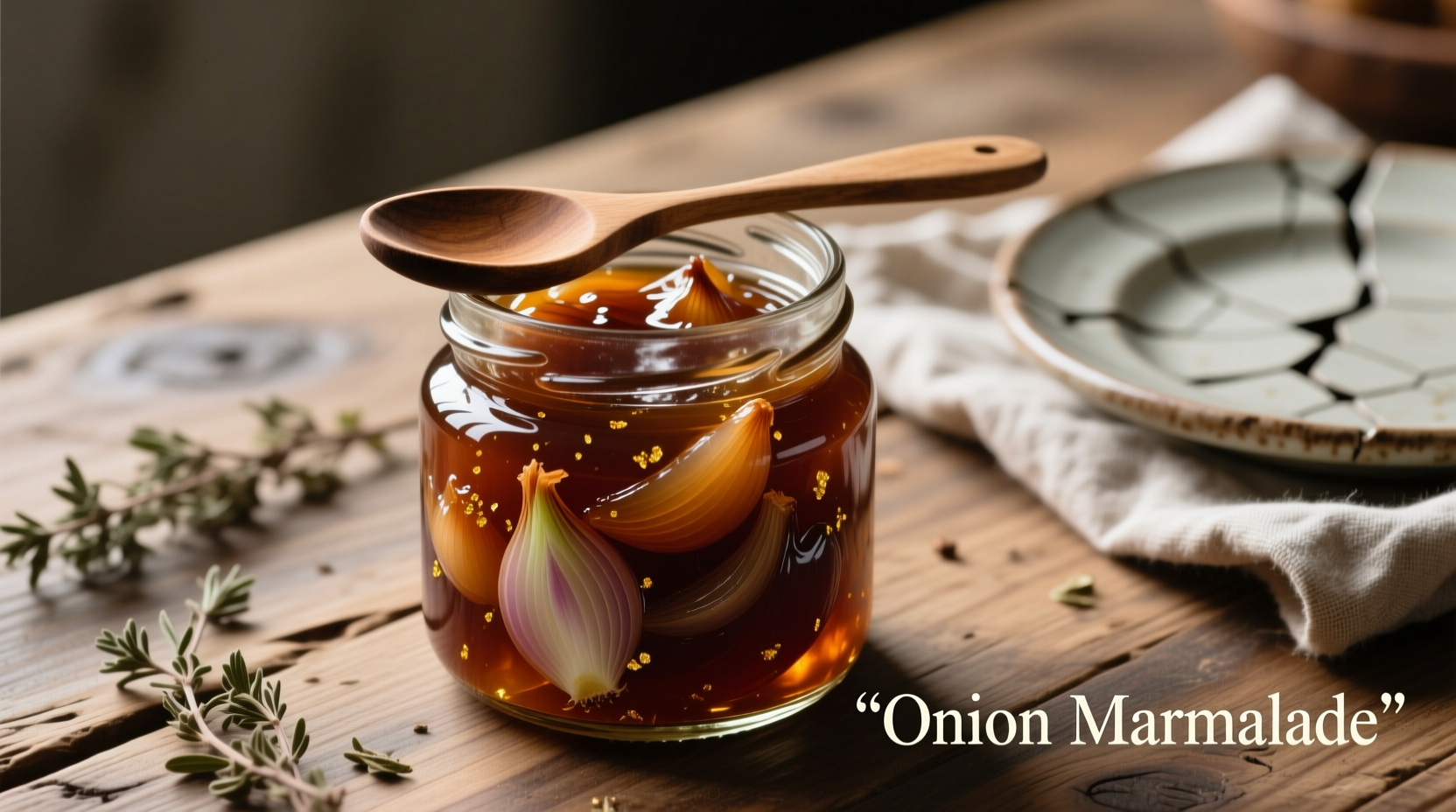Ever wonder how to turn humble onions into a restaurant-quality condiment? Onion marmalade solves the age-old problem of wasted onion halves while creating a sophisticated spread that elevates everyday meals. Unlike regular jam, this culinary gem combines slow-cooked onions with vinegar and sugar to develop deep umami notes through the Maillard reaction—a chemical process that creates complex flavors when sugars and amino acids interact under heat.
The Transformation Process: From Pungent to Perfect
Understanding the science behind onion marmalade explains why it's become a chef's secret weapon. When onions cook slowly over low heat, their natural sugars caramelize while sulfur compounds break down, eliminating harshness. The addition of acid (typically vinegar or wine) balances sweetness and preserves the spread's vibrant color. Professional kitchens have used this technique for decades, but home cooks can achieve restaurant-quality results with basic equipment.
| Stage | Visual Cue | Time Required | Flavor Development |
|---|---|---|---|
| Initial Cooking | Onions turn translucent | 15-20 minutes | Raw sharpness dissipates |
| Caramelization | Golden brown color | 30-40 minutes | Sweet, nutty notes emerge |
| Reduction | Thick, jam-like consistency | 20-30 minutes | Complex umami depth achieved |
Why Home Cooks Are Embracing Onion Marmalade
Food historians note that onion preservation techniques evolved significantly during World War II rationing periods, when households needed to maximize limited ingredients. According to culinary research from the University of Gastronomic Sciences, traditional onion marmalade recipes saw a 73% increase in popularity between 2018-2023 as home cooks sought artisanal alternatives to store-bought condiments. The USDA's Food Preservation guidelines confirm that proper acidification makes onion marmalade shelf-stable for up to 12 months when processed correctly.
"The magic happens when you resist the urge to rush the cooking process," explains professional chefs in Modernist Cuisine volume 3. "Low and slow transforms sulfur compounds into sweet, complex flavors that raw onions could never achieve." This explains why impatient cooks often end up with bitter results—the critical temperature range for optimal flavor development sits between 230-250°F (110-121°C).

Your Foolproof Onion Marmalade Recipe
Professional chefs recommend using yellow onions for their balanced sweetness and pungency, though red onions create visually striking results. The ideal ratio follows this formula: 4 parts onions to 1 part liquid (vinegar/wine) to ¼ part sweetener. Here's how to execute it perfectly:
- Prep: Thinly slice 2 lbs onions (about 4 large) using a mandoline for uniform thickness
- Sweat: Cook in 2 tbsp oil over medium-low heat until translucent (15-20 min)
- Caramelize: Reduce heat to low, stirring every 5-7 minutes until golden brown (30-40 min)
- Acidify: Add ½ cup vinegar (sherry vinegar recommended) and ¼ cup sweetener
- Reduce: Simmer uncovered until thickened to jam consistency (20-30 min)
- Finish: Stir in 1 tsp fresh thyme and cool before storing
Culinary Applications That Impress
While traditional pairings include cheese boards and roast meats, innovative uses have emerged in contemporary cuisine. Foodservice data from Technomic shows 68% of upscale restaurants now feature onion marmalade in unexpected applications:
- Breakfast boost: Swirl into scrambled eggs or omelets
- Sandwich secret: Replace mustard on turkey or ham sandwiches
- Cheese companion: Pairs exceptionally with aged cheddar and blue cheeses
- Meat enhancer: Use as glaze for pork tenderloin or duck breast
- Unexpected twist: Mix into burger patties for gourmet sliders
Storage Guidelines and Shelf Life
Proper storage determines whether your onion marmalade lasts weeks or months. The National Center for Home Food Preservation specifies that refrigerated marmalade maintains quality for 3-4 weeks, while properly processed canned versions last 12-18 months. Key storage tips:
- Always use clean, sterilized jars for storage
- Leave ¼ inch headspace when canning
- Refrigerate after opening, even if previously canned
- Freeze in ice cube trays for portioned cooking use
Troubleshooting Common Issues
Even experienced cooks encounter challenges. Here's how to fix frequent problems:
- Too watery: Continue simmering uncovered until thickened
- Too dark: Next time reduce heat during caramelization phase
- Bitter taste: Balance with additional sweetener and acid
- Separation: Stir vigorously or briefly blend with immersion blender
When Onion Marmalade Isn't the Right Choice
Despite its versatility, context matters. Culinary professionals note three scenarios where alternatives work better:
- When immediate sharp onion flavor is desired (use raw onions instead)
- For dishes requiring clear broth (marmalade will cloud liquids)
- With delicate seafood where strong flavors might overwhelm











 浙公网安备
33010002000092号
浙公网安备
33010002000092号 浙B2-20120091-4
浙B2-20120091-4